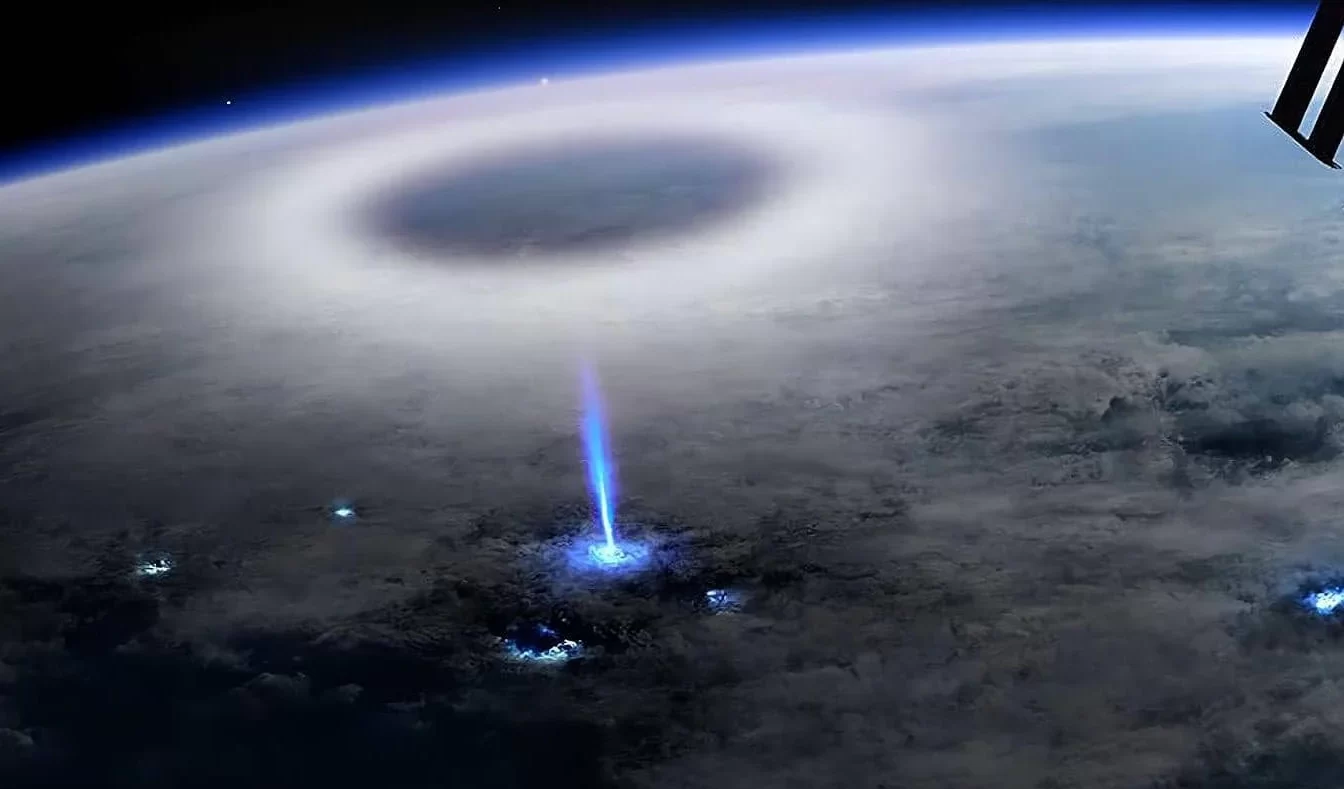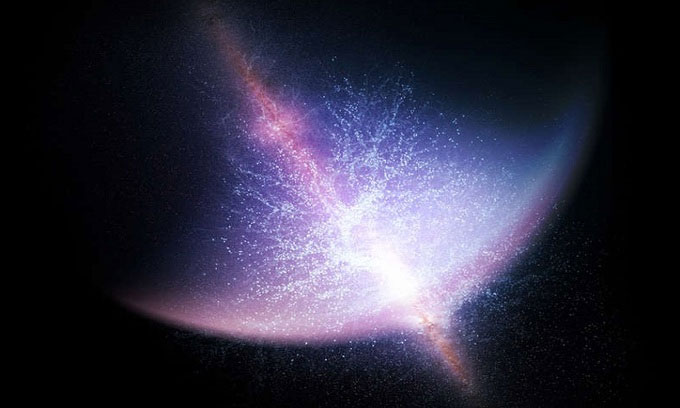Key Takeaways:
- These are rare lightning-like flashes that shoot from the tops of storm clouds toward space, reaching up to 30 miles into the stratosphere. They are difficult to see from the ground due to their brief nature and cloud cover.
- In 2019, instruments aboard the International Space Station recorded five blue flashes and a blue jet above a storm cloud near Nauru in the Pacific Ocean. These observations were crucial in understanding this phenomenon.
- Blue jets are thought to occur when the positively charged upper section of a cloud interacts with a negatively charged layer just above it, leading to a discharge of static electricity in the form of a blue flash.
- The blue jets observed by the ISS were accompanied by ultraviolet flashes called ELVES, highlighting complex upper-atmosphere electrical activity.
- Understanding blue jets and other atmospheric phenomena like red sprites is important because they may disrupt communication technologies and impact greenhouse gases and Earth’s ozone layer.
___________________
When storm clouds unleash lightning, an extraordinary phenomenon can occur: a column of blue light called a blue jet shoots upward from the cloud, reaching into the stratosphere. Blue jets can extend up to 30 miles high, but they are rare and usually obscured by the storm clouds themselves.
In 2019, instruments aboard the International Space Station (ISS) recorded a series of five blue flashes and a blue jet erupting from a storm cloud near the island of Nauru in the Pacific Ocean. These remarkable observations were later used in a study published in Nature, shedding new light on the origins of these blue jets.
What Are Blue Jets?
Blue jets form when the upper section of a storm cloud, which holds a positive charge, interacts with a negatively charged layer above the cloud. This interaction causes a brief discharge of static electricity, creating a blue flash that shoots into space. Unlike normal lightning, which strikes between clouds or from clouds to the ground, blue jets head skyward.
The blue jet over Nauru reached an altitude of 32 miles above sea level and was visible for only 10 to 20 milliseconds. It was captured by optical cameras, photometers, and a gamma-ray detector mounted on the ISS. The jets were also accompanied by ultraviolet flashes called ELVES.
Why Study Blue Jets?
Studying blue jets and other upper-atmospheric phenomena, like red sprites, is important because they can interfere with radio waves used in communication technology. Additionally, these events might influence greenhouse gas concentrations and affect Earth’s ozone layer. As scientists like Victor Pasko from Penn State point out, gaining insight into these mysterious discharges could have implications for both climate science and communication systems.
The research aboard the ISS has provided a rare glimpse into this otherworldly occurrence, bringing us one step closer to understanding the incredible electrical processes happening above the clouds.



